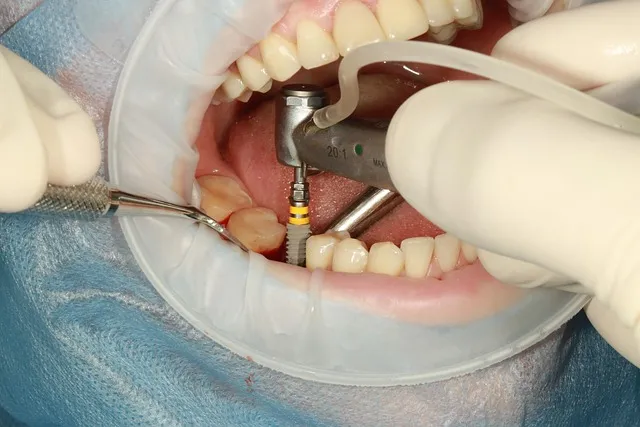Botox was first created in 1989. Since then, it has been a top choice for those who want to beat aging and look younger. While it does not beat aging in the sense of stopping the aging process altogether, Botox can temporarily improve the signs of aging by reducing the appearance of inevitable facial wrinkles and lines.
Botox has several uses in medicine and cosmetics; the treatment primarily focuses on reducing muscle activity to alleviate certain medical conditions or diminish the appearance of wrinkles and lines on the face. Have you ever wondered if Botox is truly a neurotoxin?
Botox is known as a famous brand of botulinum toxin injections, which is a Neurotoxin. It comes from the Clostridium botulinum bacterium. Botox is a powerful protein that can lead to botulism or severe food poisoning. However, it has been proven efficient in medical and cosmetic applications when used at controlled and significantly diluted levels.
This article will discuss its applications, treatment process, recovery, and side effects.
 Botox application can be categorized into two categories:
1. Medical Uses: Botox treatment treats various conditions related to muscle disorders and nerve-related issues. Some of them are mentioned below:
Botox application can be categorized into two categories:
1. Medical Uses: Botox treatment treats various conditions related to muscle disorders and nerve-related issues. Some of them are mentioned below:
What are the uses of botox injections?
 Botox application can be categorized into two categories:
1. Medical Uses: Botox treatment treats various conditions related to muscle disorders and nerve-related issues. Some of them are mentioned below:
Botox application can be categorized into two categories:
1. Medical Uses: Botox treatment treats various conditions related to muscle disorders and nerve-related issues. Some of them are mentioned below:
- Muscle Spasms: Botox can be injected into that specific muscle to eliminate muscle spasms and involuntary contractions.
- Chronic Migraines: An adult suffering headaches due to chronic migraines can be treated with Botox injections.
- Hyperhidrosis: This injection also reduces excessive sweating in the armpits, palms, and soles.
- Strabismus: Also known as Crossed Eyes, can be treated by Botox.
- Blepharospasm: Involuntary eyelid spasms can also be treated by Botox.
- Cervical Dystonia: Botox can help eliminate neck pain and abnormal head position caused by cervical dystonia (a neurological movement disorder).
- Forehead lines: Horizontal lines on the forehead.
- Glabellar line: Also called Frown lines, vertical lines between the eyebrows.
- Crow's Feet: Lines at the corner of the eyes.
What is the treatment process required for injections?
The treatment process for injections can vary depending on the specific type of injection and the medical condition being treated. However, here is a general overview of the typical steps involved in receiving an injection treatment:- Consultation: Before going for the treatment, you should consult a well-qualified healthcare professional. This could be a dermatologist, plastic surgeon, neurologist, or other specialized medical practitioner discussing your concerns and deciding whether you are suitable for Botox treatment.
- Injection: Botox is administered with small injections into the targeted muscles or areas of concern.
- Duration: The procedure of administering Botox usually takes up to 10-15 minutes. It is an outpatient procedure, and you can return home on the same day.
- Anesthesia: If you receive an overactive bladder injection, you may receive local or regional anesthesia.
Is Botox a Neurotoxin? Exploring the Facts Simply
Yes, Botox is classified as a neurotoxin. It's a substance that affects how our nerves communicate with our muscles. When injected, Botox blocks the signals that tell our muscles to move, leading to temporary muscle paralysis. This unique property has made it widely used in cosmetic procedures, like reducing wrinkles and medical treatments for certain conditions. A study suggests detailed insights into Botox's neurotoxin effects. If you're considering Botox, consult a medical professional for proper guidance and safety. Understanding its neurotoxin nature helps us appreciate its diverse applications in the medical and cosmetic fields.Who should not get Botox injections?
Generally, Botox injections are safe, but still, a woman who is pregnant or breastfeeding should not get this treatment. People Should also avoid Botox treatment. If they have:- Neuromuscular disease.
- Drooping eyelids
- Weak Facial muscles
What are the recovery factors of botox injections?
- Immediate aftercare: You may experience some redness and swelling in the injected areas, but this will subside within a few hours.
- Avoid massaging: You should avoid rubbing or massaging the treated areas immediately after the procedure to restrain the toxin from spreading to unintended muscles.
- Results: It takes a few days, which may be extended to two weeks, to witness the noticeable effects of Botox treatment.
How long does Botox last?
The effects of Botox treatment usually last for three-four months. Your healthcare may recommend you to have retreatment at this time as your wrinkles and other issues may come again. However, the muscles may learn to relax on their own with time. Therefore, they may be staggered across extended periods as the retreat continues. The frequency of your Botox treatments may be discussed with your doctor. Also Read: How Long Does It Take For Botox To Work?What are the side effects of toxins?
- Redness: Mild bruising and redness on the injected area, but it is commonly for a temporary period after treatment.
- Headache: Mild headaches can be experienced by some folks after the treatment.
- Drooping Eyelids or Eyebrows: Botox may cause temporary drooping of the eyelids or eyebrows, but it rarely happens.
- Allergic Reactions: Botox can rarely cause any allergic reactions.
- Flu-Like Symptoms: Mild flu-like symptoms can also be experienced by some folks but in rare cases.
When should one call the healthcare provider?
Generally, Botox does not accompanied by severe side effects, but you should call your healthcare provider immediately if you experience the following:- Blurred Vision
- Signs of urinary tract infection include blood in the urine
- Dyspnea, i.e., Shortness of breath.
- Trouble swallowing.
- Severe stomach upset.
- Numbness or paralysis in an untreated area.
- Slurred speech.
Conclusion -
Botox treatments are for removing the lines on the forehead and fine lines around the eyes and cheeks. Botox is a neurotoxin but can act like one if you are frequently exposed to botox injections. Also, it can be concluded that botulinum toxin can be commonly known as a potent neurotoxin with significant medical and cosmetic applications. While it can be valuable for treating various conditions and enhancing appearances, its potency, risk, and demand can be cautious and responsible. So, the next time you ponder the question, "Is Botox a neurotoxin?" remember that the answer is a resounding yes, backed by scientific understanding and years of successful application. Understanding the mechanism and appropriate dosing through medical supervision is essential in ensuring the safety and effectiveness of these injections, and medical advancements continue to evolve. They can be expected to refine the application and security of the neurotoxins. Also Read: Can you Get Botox Around Your Eyes?Frequently Asked Questions
What is the difference between neurotoxin and botox?
Neurotoxins are injectable solutions that temporarily block the nerve receptors in the muscle and prevent lines and wrinkles.
What are the harms of Botox injections?
Some of the harm of Botox injections can be keloid scars and ptosis.
Is botox the most potent neurotoxin?
For starters, botulinum toxins type A are the primary active ingredients in each product.
Can botox injections result in neurological problems?
FDA can be reported to have adverse events after the injections and affect the nervous system from the initial site of injections.
What is safer than Botox?
The neurotoxins are alternatives to botox and FDA approved and safe to use to reduce wrinkles.

Reviewed by







